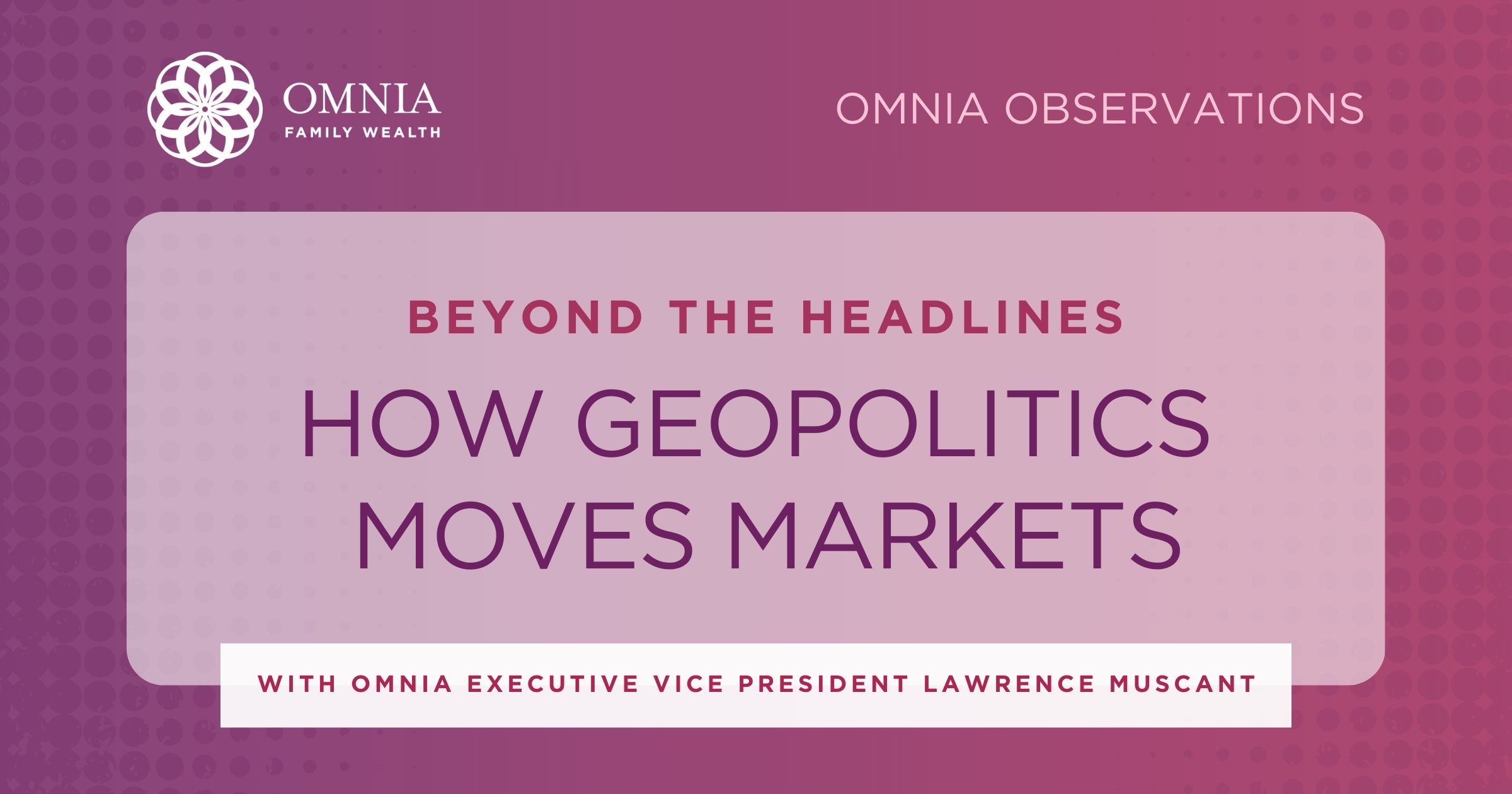
The Successful Entrepreneur Turned Turkey
Picture this: You are a successful entrepreneur. You just had your first exit six months ago. After building your company for nine and a half long years of hard work and much personal sacrifice, you took your company public. The majority of your wealth is still in company stocks, but you took out enough to be able to live comfortably, have money aside for the kids’ tuition at an Ivy League school, move to a larger house with more amenities and take some trips with your spouse or partner to places you always wanted to travel together.
After some due diligence and references from friends, you selected a well-known investment bank to manage your assets. The wealth advisor has been managing money for some of your friends for the last 10 years. Your objective is to grow the money for the long term, but with low risk, so you and your family can maintain your new lifestyle.
The advisor has built you a balanced, diversified portfolio of stocks, bonds and public and private real estate. Because the amount you entrusted him to manage is a large sum, you gained access to some of their “unique” hedge funds and private equity strategies — all uncorrelated to the equity markets — with capacity offered only to premium clients.
The first six months were a great experience. Your company stock is valued at 35% higher than at the time of the IPO, and your portfolio has appreciated nicely, as the stock market had a great run toward the end of the year. Then came 2022.
Toward the end of 2021, you started seeing some tech darlings in your industry lose significant value, but you thought they were just unrealistically overvalued. It didn’t end there. By mid-2022, public markets lost over 20% to 30%, and many tech stocks, including yours, lost over 50% of their value. But you’re a veteran. You’ve already seen prices fluctuate sharply while you were growing your business and raising capital from investors.
The shock came when your investment advisor called to tell you that your portfolio, your exit, your chips off the table, is down 40%. “How?! The portfolio is conservative and well diversified! How did we lose so much so quickly?” you ask.
“We didn’t expect everything to fall at the same time and at this magnitude,” answered the advisor. Our stock allocation is down 30%, our allocation to innovative technology companies is down 65%, but the worst is that our most conservative allocation to bonds that was supposed to balance the risks is down over 20% as well.” You ask, “And what about the hedge we had?” What was it called? Covered calls…didn’t that help us? “Not really,” answered the advisor. “It wasn’t a true hedge.” Now your portfolio must grow by 66% just to break even. The large negative numbers are always much more important than the positive ones.
And here you are, experiencing a strong business slowing down. Revenues are falling and expenses including workforce must be cut. At the same time, your personal portfolio declined significantly in value, leaving you and your family exposed financially again, just like the days you were still building your company. That’s not what you had in mind six months ago. Your confidence is now replaced with a feeling of fragility.
If this story sounds far-fetched, I’m sorry to tell you it is not. We keep seeing it over and over and over again.
- Executives and senior employees with company stocks and options, investing personal money in correlated portfolios
- Venture fund managers investing their personal portfolios in tech stocks because they know the industry better than anyone
- Real estate developers and operators who invest their personal portfolios in other types of “uncorrelated” real estate
- It’s especially important for people in the advisory/investment management business because their businesses and their personal portfolios will have a tight correlation and the same exact risk factors
The whole idea of the exit was for the entrepreneur and his family to take important chips off the table, not to put them on a different table.
When you had no choice
You had no choice when you were building your company, your wealth. You needed a strong economy, healthy labor market, lower interest rates, stable equity markets and geopolitical stability. These were all important for your success. In other words, you were “long” growth and market stability. But once you had the ability to take some chips off the table, why would you ever expose them to rare but potentially devastating events? Having your business and your personal portfolio correlated is not wise, to say the least. But unfortunately, the large majority of entrepreneurs’ portfolios are built just like that. It seems that everyone is chasing the latest best deal or best technology company while not understanding the potential consequences. Portfolios are not built to withstand harsh times, distressed market environments or any other extreme random events we can’t predict. And that is exactly when you and your family need them to be uncorrelated to your main source of income.
Don’t tell me that the company and personal portfolio will recover in the long run. I promise you, in the moment, no one will want to hear that. First, we have no idea how severe and prolonged a crisis will be, and second, why risk exposure to this type of situation in the first place?
The Fallacy of Portfolio Diversification
The conventional belief about diversification is that investing in non-correlated assets will prevent heavy losses due to bad performance in one asset. This concept is correct, but the reality is not that simple. As if history didn’t teach us anything, many investors still think they are diversified based on an asset’s historical correlation, only to find out at the worst time that the correlation between their “diversified” assets is very high when they all fall at the same time. Many assets that presumably are not correlated actually share the same risk factors, and correlations between assets will change over time and in different economic environments. Most portfolios today are not built to handle a changing environment as the one we are facing today. And as I wrote in the past year, risks are now materially higher than in previous times.
You Don’t Need to Compromise on Returns
Building a portfolio that can stay robust and uncorrelated during tough or extreme events is much more important than trying to squeeze the last 1% of return from any “deal.” Such a portfolio will not only protect your capital during these times but will also let you take advantage of the opportunities when everyone else is running for cover. Still, it doesn’t mean you need to compromise on returns. In fact, we expect to achieve similar or higher returns longer term with much less risk, as we take the extreme losses out of our returns’ distribution.
I’m not saying it’s an easy task. We all have similar biases when investing, but understanding that diversifying your overall wealth, not only your portfolio, is critical. Extreme events are always explainable in hindsight, leading investors to think they learned the past lessons and are no longer exposed to such events. It’s never like that.
The best countries in the world are built by entrepreneurs. As an entrepreneur, you take risks, but in order for you to keep focusing on your company or move to the next brilliant idea, you need to take the entrepreneurial risk out of your personal portfolio.
In his book “The Black Swan,” Nassim Nicholas Taleb describes the Turkey Trap. “Every single feeding will firm the bird’s belief that it is the general rule of life to be fed every day by a friendly member of the human race ‘looking for its best interests,’ as a politician would say. On the afternoon of the Wednesday before Thanksgiving, something ‘unexpected’ will happen to the turkey. It will incur a revision of belief.”
Don’t be a turkey.
Important Information:
Omnia Family Wealth, LLC (“Omnia”), a multi-family office, is a registered investment advisor with the SEC. This commentary is provided for educational and informational purposes only. It does not take into account any investor’s particular investment objectives, strategies, tax status, or investment horizon. No portion of any statement included herein is to be construed as a solicitation to the rendering of personalized investment advice nor an offer to buy or sell a security through this communication.
Consult with an accountant or attorney regarding individual tax or legal advice.
Advisory services are only offered to clients or prospective clients where Omnia Family Wealth and its representatives are properly licensed or exempt from licensure. Information in this message is for the intended recipient[s] only. Please visit our website https://omniawealth.com for important disclosures.
This content is provided for informational purposes only and is not intended as a recommendation to invest in any particular asset class or strategy or as a promise of future performance. References to future returns are not promises or even estimates of actual returns a client portfolio may achieve.
The views expressed in this commentary are subject to change based on market and other conditions. These documents may contain certain statements that may be deemed forward looking statements. Please note that any such statements are not guarantees of any future performance and actual results or developments may differ materially from those projected. Any projections, market outlooks, or estimates are based upon certain assumptions and should not be construed as indicative of actual events that will occur.
All information has been obtained from sources believed to be reliable, but its accuracy is not guaranteed. There is no representation or warranty as to the current accuracy, reliability or completeness of, nor liability for, decisions based on such information and it should not be relied on as such.
No investment strategy or risk management technique can guarantee returns or eliminate risk in any market environment. All investments include a risk of loss that clients should be prepared to bear. The principal risks of Omnia strategies are disclosed in the publicly available Form ADV Part 2A.
Diversification does not ensure a profit or guarantee against loss.
For current Omnia Family Wealth information, please visit the Investment Adviser Public Disclosure website at www.adviserinfo.sec.gov









